When it comes to the animal kingdom, teeth can serve as powerful tools for hunting, defense, and survival. From giant tusks to razor-sharp incisors, many animals have evolved impressive sets of teeth to thrive in their environments. In this article, we’ll take an in-depth look at the largest animal teeth on Earth, ranked by size and their significance.
The African elephant, the largest land mammal, also possesses the largest teeth in the animal kingdom. Their tusks, which are essentially elongated incisor teeth, can reach a staggering length of up to 10 feet (3.05 meters). These tusks weigh between 50 to 100 pounds (23 to 45 kilograms) each. Elephants use their tusks for various purposes such as digging, lifting objects, gathering food, and defense against predators.
In addition to the tusks, African Elephants-Are-Endangered.html">elephants have molars that are also large, measuring about 12 inches (30 centimeters) in length. However, it’s the massive ivory tusks that truly set these gentle giants apart in terms of dental size.
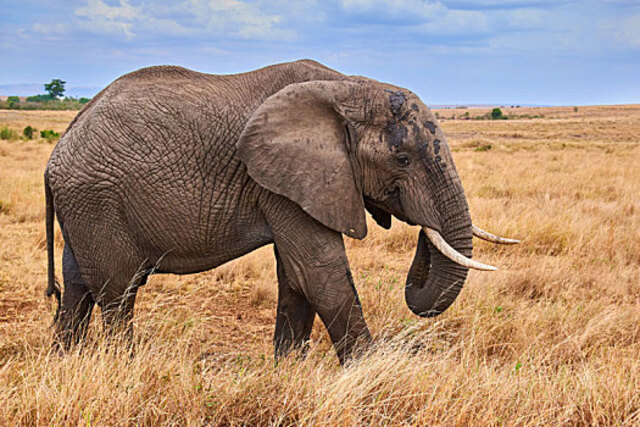
The narwhal, often referred to as the "unicorn of the sea," possesses one of the most unique and elongated teeth in the animal world. The male narwhal's tusk, which is actually an enlarged canine tooth, can grow as long as 10 feet (3.05 meters).
This spiraled tusk, often mistaken for a horn, grows out from the left side of the narwhal's upper jaw. Though the exact function of the tusk is still debated, it is believed to be used in mating displays, social interactions, and possibly as a sensory organ.
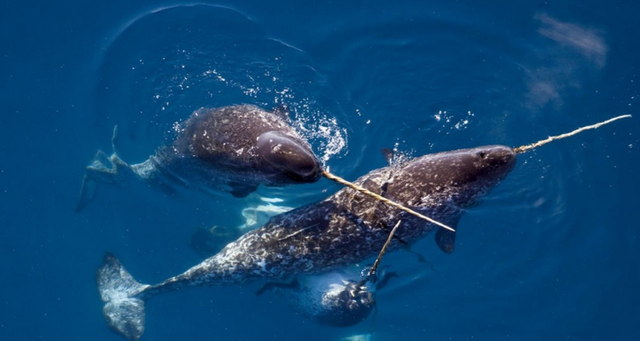
Walruses are known for their impressive tusks, which can grow to lengths of 3.3 feet (1 meter). These tusks, which are elongated canine teeth, are present in both males and females, though they tend to be longer in males.
Weighing up to 12 pounds (5.4 kilograms) each, walrus tusks are used primarily for hauling their massive bodies out of the water onto ice floes and for dominance displays among males. They can also use their tusks to break through ice and defend themselves from predators like polar bears.
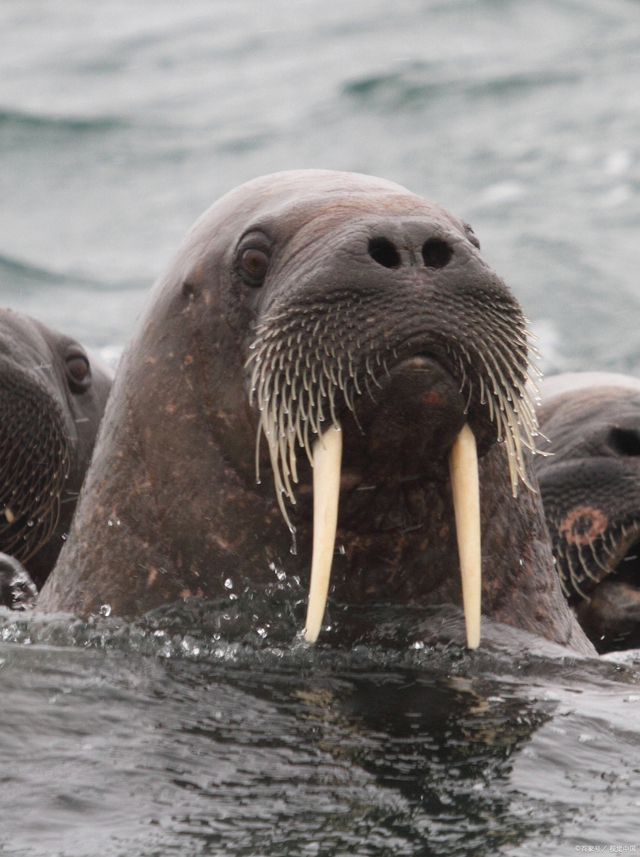
The hippopotamus is another mammal with an incredible set of teeth. Their lower canine teeth, often referred to as tusks, can grow up to 1.6 feet (50 centimeters) long. In addition, their incisors can reach lengths of around 1 foot (30 centimeters). These massive teeth are not just for show; hippos are extremely territorial and use their teeth in aggressive displays and during fights with other hippos.
A hippo’s bite force is also among the strongest of any land animal, with an estimated force of 1,800 pounds per square inch (psi), making their teeth both deadly and powerful.

The orca, also known as the killer whale, has the largest teeth of any carnivorous marine animal. These conical-shaped teeth can grow up to 4 inches (10 centimeters) long. An orca has around 40 to 56 teeth, which they use to catch and tear apart their prey, which can range from fish to seals, sea lions, and even other whales.
Despite their fearsome reputation, orcas have highly specialized hunting techniques and live in tight-knit social groups, often referred to as pods.
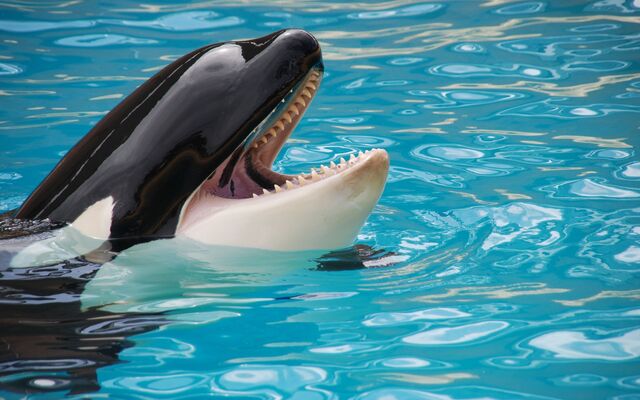
The great white shark has a fearsome reputation, largely due to its large, serrated teeth. These teeth, which can grow up to 3 inches (7.6 centimeters) long, are designed to rip through flesh efficiently. The shark's teeth are arranged in rows, and when one tooth is lost, another quickly moves forward to take its place. This ensures that the great white is always equipped for its next meal.
Unlike mammals, sharks have a continuous cycle of tooth regeneration, which is essential given the wear and tear their teeth experience.

The saltwater crocodile, the largest reptile in the world, also boasts some of the largest teeth in the animal kingdom. Their teeth can grow up to 5 inches (12.7 centimeters) long. Crocodiles use their powerful jaws and sharp teeth to seize and hold onto prey, which can range from fish and birds to large mammals.
Crocodiles don’t chew their food. Instead, they use their teeth to grip their prey, then perform a death roll to tear it into manageable pieces before swallowing.
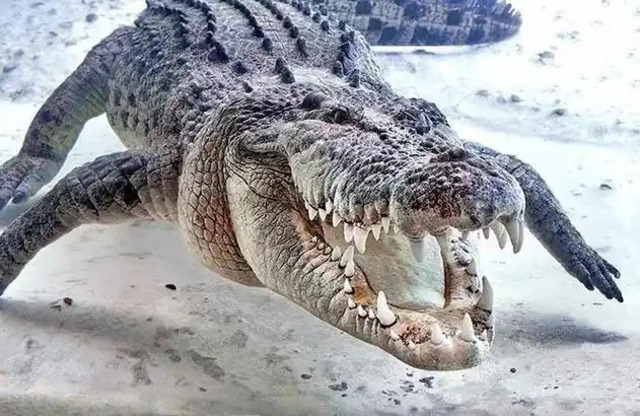
The sperm whale, the largest of the toothed whales, possesses conical teeth that can grow up to 8 inches (20 centimeters) long. These teeth are located only in the whale’s lower jaw. While sperm whales primarily feed on squid, their teeth are used more for grasping rather than chewing their prey.
Sperm whales are known for their deep diving abilities and their massive heads, which house the largest brain of any animal, as well as the unique spermaceti organ.
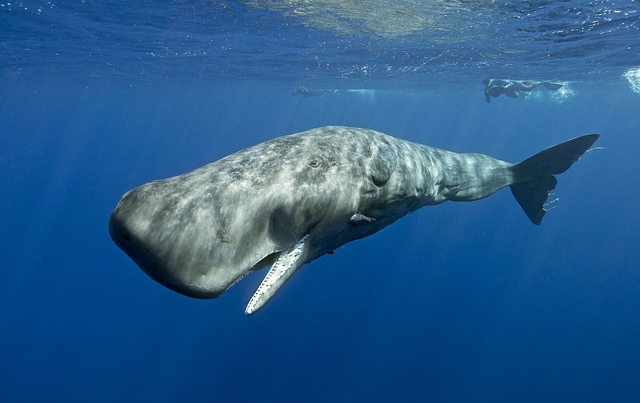
The size and shape of an animal’s teeth often reveal much about their diet, habits, and ecological role. Whether used for defense, hunting, or social interactions, these enormous teeth are among the most fascinating adaptations in the natural world. From the massive tusks of Elephants-Are-Endangered.html">elephants and narwhals to the sharp teeth of orcas and sharks, each of these creatures has evolved specialized teeth that enable them to survive and thrive in their respective environments.
| Animal | Type of Tooth | Size |
|---|---|---|
| African Elephant | Tusks | Up to 10 feet (3.05 meters) |
| Narwhal | Tusk | Up to 10 feet (3.05 meters) |
| Walrus | Tusks | Up to 3.3 feet (1 meter) |
| Hippopotamus | Canines | Up to 1.6 feet (50 cm) |
| Orca | Teeth | Up to 4 inches (10 cm) |
| Great White Shark | Teeth | Up to 3 inches (7.6 cm) |
| Saltwater Crocodile | Teeth | Up to 5 inches (12.7 cm) |
| Sperm Whale | Teeth | Up to 8 inches (20 cm) |
By understanding these impressive teeth, we gain greater insight into the ways animals have evolved and adapted to their environments. Whether for show, survival, or supremacy, these teeth are among the most remarkable features in the animal kingdom.
animal tags: Sperm-Whale Saltwater-Crocodile Orca Walrus Narwhal African-Elephant
We created this article in conjunction with AI technology, then made sure it was fact-checked and edited by a Animals Top editor.